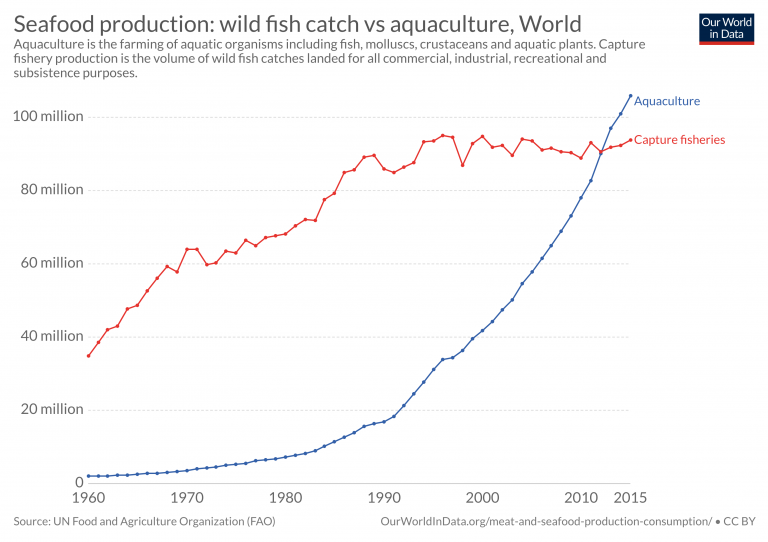
Imagine you wake up on a Monday morning and walk to the dining hall for breakfast. You grab your usual breakfast of sausage, eggs, and a salad but instead of carrots and lettuce, you grab seaweed and sea vegetables. While this may sound weird and disgusting, it’s a very real possibility in the near future. Terrestrial agriculture accounts for roughly 11% of our entire greenhouse gas emissions, and uses a significant amount of land, water, and food to maintain these farms. Click the link below to see the effects of terrestrial agriculture.
https://www.fao.org/3/cb3808en/cb3808en.pdf
As our population grows and agriculture based land use increases to support the hunger of this population, we will need to seek other forms of agriculture. One of the likely potential solutions to this issue is aquaculture. Aquaculture employs the use of large nets below water to farm and raise species of fish, vegetables, and other sea creatures. They are typically deployed in the ocean where sunlight is abundant, and minerals like salt can provide essential nutrients to the plants and animals being harvested. Dozens of seaweeds, mollusks, fish, and invertebrates are grown and uses for a plethora of purposes ranging from food, to medicine, and other products. The benefits of this form of marine farming means it’s easier to cultivate large quantities of food without taking it out of its natural habitat. Many fish such as salmon, cod, tilapia, and shrimp are grown in large fish farms built on land. These fish have limited diets, chemicals, and little range of movement in these “holes”. As a result the meat isn’t as healthy and can even have negative side effects on people that eat them.
You might be wandering why people don’t eat fresh, wild caught seafood. Overfishing, the process of manually catching fish, and keeping caught fish fresh leads to high costs for less meat. Some families either don’t have the money to afford fresh fish, or would rather just buy farmed fish in bulk for much cheaper. This is where aquaculture seeks to solve this issue. With the process shown in the diagram above, fish have free range to swim, eat what they please, and grow strong in their natural environment. The nets keep them enclosed but they have no obstructions within the net. Imagine waking up and realizing Earth was surrounded by a net, sorta weird but it wouldn’t change your day to day life because your habitat was enclosed in that net. The same applies with sea vegetables like seaweed, the product is mass produced but doesn’t have the downsides that mass produced food on terrestrial land has.

https://ourworldindata.org/rise-of-aquaculture
For a number of years, aquaculture has been the primary source of seafood for most people, and you wouldn’t;t even have known. This form of marine farming is continuing to skyrocket as demand increases. There are certainly potential side effects to this process such as pesticide use and the obstruction of water currents as a result of the large nets, but these problems are being mitigated and will hopefully be a non-factor in the next few years. Next time you’re shopping for fish, keep your eye out for will caught salmon that is extremely cheap, it may have just came from a marine farm near you!

This is such an interesting subject to talk about. I had never heard about aquaculture until this. I have had the experience of seeing fish farms in person, and they have never appeared safe or sanitary to me. I hope that aquaculture stays on the rise as you predict.